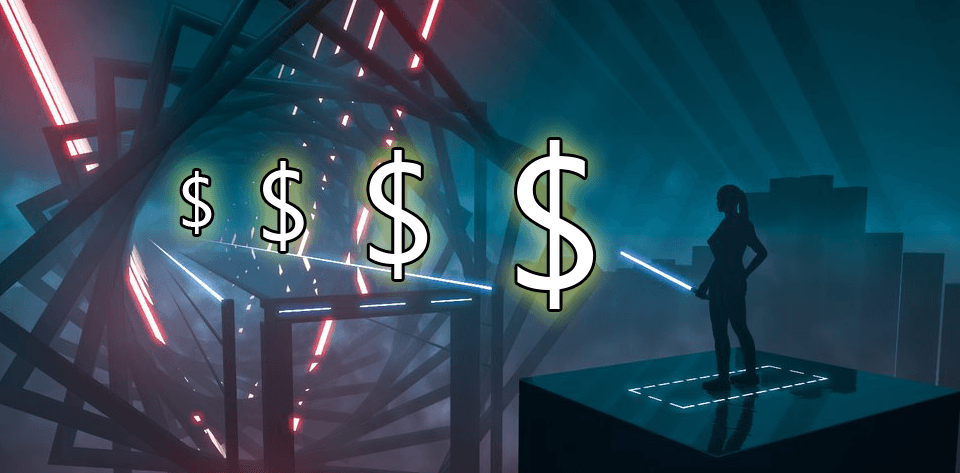Blog
Thoughts about the VR gaming market, sales and profits
Published on
May 15, 2018
As of the writing of this blog post (May 2018), Beat Saber is the darling of the VR gaming market. Universally praised, highly reviewed and fiendishly fun, it’s truly a gem. Three weeks after release, Hyperbolic Magnetism reported to have sold 100k copies. Lets dive into that number, shall we?
Beat Saber sold 100k copies at $20, so that’s $2,000,000.
Steam takes 30%, we are left with $1.4m.
An average employee for a gaming company will cost a about $250k a year (sometimes much more, but lets keep it conservative). That number includes the employee salary and also rent, office equipment, insurance, taxes, legal, book keeping, heating, cooling, parking and 1000 other expenses that a business needs in order to function.
$1.4m at $250k a year translates to about five and half man-years. A small game (like Beat Saber) took three people two years to develop. Meaning that 100k sales is not enough to turn a profit, even on a small game.
Yes, there will be more sales, but the majority of the sales are in the first few weeks. Also, the team has a lot more work to do, development doesn’t halt after the game is released, so those future sales are needed just to cover operating costs.
Job Simulator, another successful game, has about 200k sales on Steam. Lets assume that they had similar sales on the Oculus store and PSVR, so that’s 600k units sold in total. At $20 they generated $12m revenue. 30% goes to the store, we are left with $8.4m. At $250k/year (again, this is very conservative) that’s 33 man-years. Owlchemy Labs had about 20 people working for 2 years on Job Simulator. That means, to this date, it has yet to cover the initial development cost.
Bottom line, except a handful of first-to-market, one-man titles that won the VR lottery, nobody is making any money in VR gaming right now.
